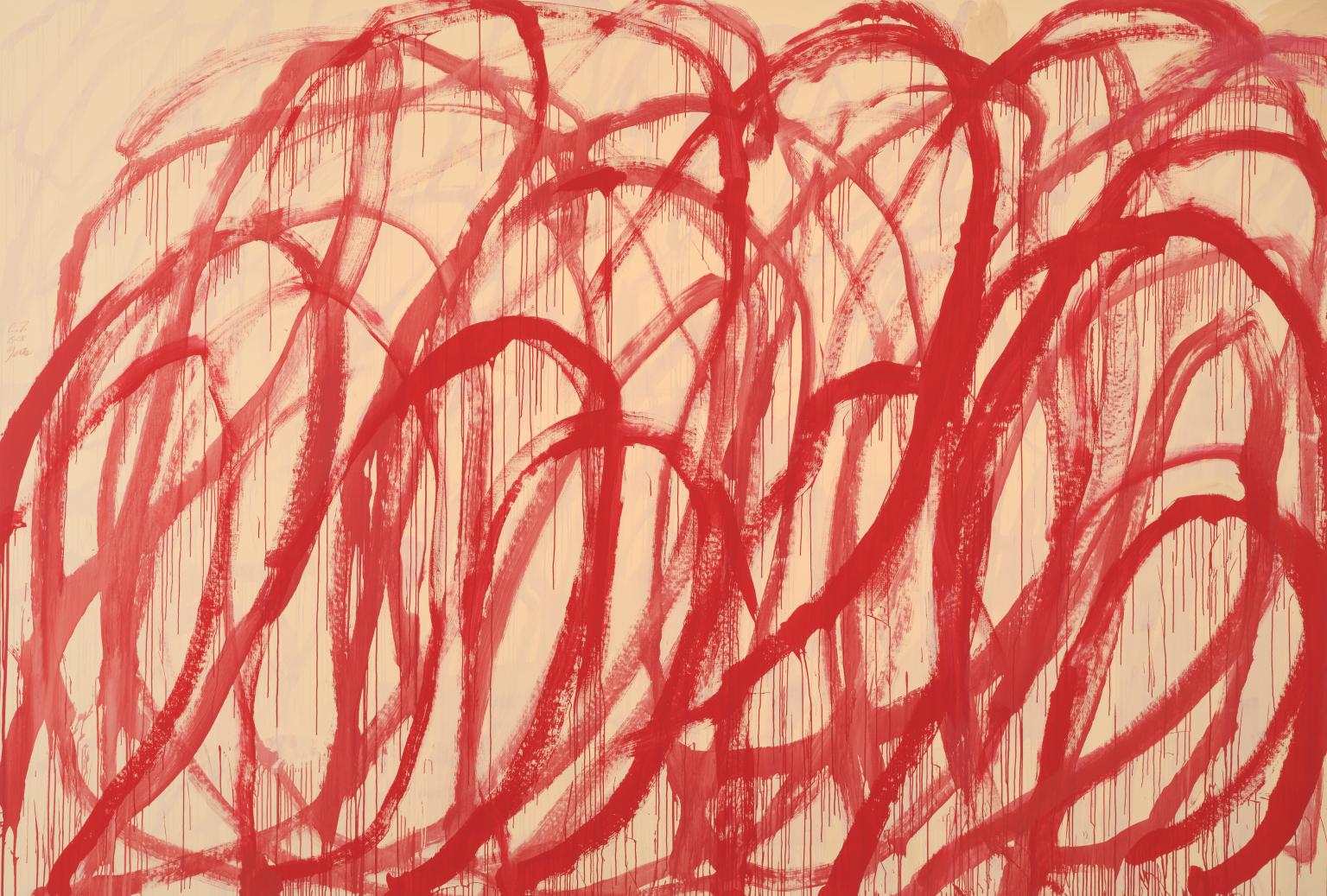
By Dean Gregory, to Museum Spotlight Europe (March 2023)
Currently, art enthusiasts are afforded a splendid opportunity to experience the art of the American painter Cy Twombly at the esteemed Gagosian gallery in New York. However, to fully understand Twombly’s work, one should look across the Atlantic Ocean to Europe, where the painter spent much of his life in Italy. As the artist cultivated his work, drawing upon ancient Mediterranean civilization, museums throughout the continent collected his art. These collections are now permanent fixtures in resplendent institutions like: the Galleria Nazionale d’Arte Moderna e Contemporanea (GNAM) in Rome, the Brandhorst Museum in Munich, the Louvre in Paris, Guggenheim in Bilbao, and Tate Modern in London.

Cy Twombly, Leaving Paphos Ringed with Waves (IV) (2009). Acrylic on canvas. Private Collection Courtesy Gagosian. © Cy Twombly Foundation. Photographer: Mike Bruce.
Twombly’s Beginnings
Twombly discovered Europe’s impressive landscape during a trip with fellow painter Robert Rauschenberg in the 1950s, while they were students together at Black Mountain College in North Carolina. During their trip, they explored Italy, Spain, and Morocco. Twombly was left with a thirst for deeper exploration of Mediterranean motifs, which inspired him to add deeper textures to his work. In time, Twombly would make Italy his home, refining his abstract approach to ancient culture and themes from Egypt, Greece, and Rome.
Twombly, Rauschenberg, and Jasper Johns are considered the holy trinity of American painters with Southern roots following the expressionism of Jackson Pollock. Following his passing in 2011, appreciation for Twombly’s work continues to grow. In 2017, the Pompidou Centre in Paris held a monumental retrospective, whereby a significant number of the painter’s major cycles and works were brought together to be celebrated. Given his legacy, the influence of Twombly is seen in the work of artists such as Jean-Michel Basquiat, Anselm Kiefer, and Brice Marden.

Cy Twombly. Achilles Mourning the Death of Patroclus (1962). Oil and Graphite on Canvas. © Cy Twombly Foundation, Rome. © Centre Pompidou
GNAM, Rome
The GNAM in the artist’s adopted city of Rome offers the experience of observing his work in the place he called home. The institution features work from the painter, including The Fall of Hyperion. Within a neoclassical palace near the Borghese gardens, the collection encompasses thousands of works from Italian and international creative figures such as Francesco Clemente, Modigliani, Kandinsky, Van Gogh, as well as Duchamp. Seamlessly accessible by foot or public transportation, the space is well-positioned from a medley of accommodation options in the center of the Eternal City.
Brandhorst, Munich
To the north of Italy, in the Bavarian city of Munich, resides the Brandhorst Collection. The museum features an entire floor dedicated to the work of the American artist. The institution reserves a room to display Twombly’s seminal 12-panel work, Lepanto. This series captures his vision of the naval battle between the Christian European Holy League and the Ottoman Empire in 1571 on the Gulf of Patras in Greece. The paintings incorporate maritime themes from antiquity and the figurative painting tradition practiced by Tintoretto and Titian. The museum is in the center of Munich, accessible easily from a range of accommodation options. On Sundays, admission to the institution costs 1 Euro– perfect for a family outing.
Louvre, Paris
From Munich, across the border in France, visitors to the Louvre in Paris might be stuck looking up. Twombly was asked to paint the ceiling of the Salles des Bronzes Antiques as part of a permanent exhibition. The ceiling features the names of esteemed sculptors from Ancient Greece. When visiting Paris, Twombly enjoyed staying at Hôtel la Louisiane. Other creative minds who frequented the hotel include Ernest Hemingway, Quentin Tarantino, and Lucian Freud. Positioned in the center of Paris on the Seine, the Louvre is reached effortlessly through pedestrian walkways, taxis, and public transportation.

© Commons Wikimedia
Guggenheim Bilbao
South from Paris into Northern Spain, the Guggenheim Museum in Bilbao features one of Twombly’s major cycles of work. Specifically, Nine Discourses on Commodus exemplifies how the artist’s American heritage became accentuated through his time in Rome. Painted in the Italian capital in 1963 during the assassination of President John F. Kennedy, the work encompasses Twombly’s dual identity as an American living in Italy.
Nine Discourses grapples with Roman history and the potential American decline from the aftermath of Kennedy’s death. Echoing the scope of the Lepanto work in Munich, Nine Discourses commands a significant section of the institution, which was designed by the esteemed architect Frank Gehry. Located in the heart of Bilbao, the museum is easily accessed from a range of accommodation options on foot, taxi, or public transportation.
Tate Modern
In London, Twombly’s Untitled (Bacchus) lives in the Tate Modern among other works by the painter. Visitors to the Tate also have the opportunity to experience a new exhibition on Cezanne until March 12 of 2023. The museum space, dedicated to modern and contemporary British and international artists, is housed in the previous Bankside Power Station on the south bank of the Thames River. The museum is easily reachable on foot, by taxi, or through public transportation from a variety of select accommodation options.
Other Twombly Destinations
In addition to the spaces explored above, visitors to Rome may also consider visiting Santa Maria in Vallicella where the ashes of Cy Twombly remain. The church is located in the historic center of the city between the Tiber River and Piazza Navona to the west. Further, guests may also enjoy experiencing the Pigorini National Museum of Prehistory and Ethnography in the Italian capital. Twombly would visit Luigi Pigorini to sketch artifacts from distant lands and rich cultures. The institution is located farther afield from the center of the capital, though accessible by taxi or public transportation. Experience Twombly from the comforts of your home by watching a documentary film of the American artist, created in cooperation with the Cy Twombly Foundation.
Cover photo: Untitled (Bacchus) 2008. © Cy Twombly Foundation.


Leave a Reply